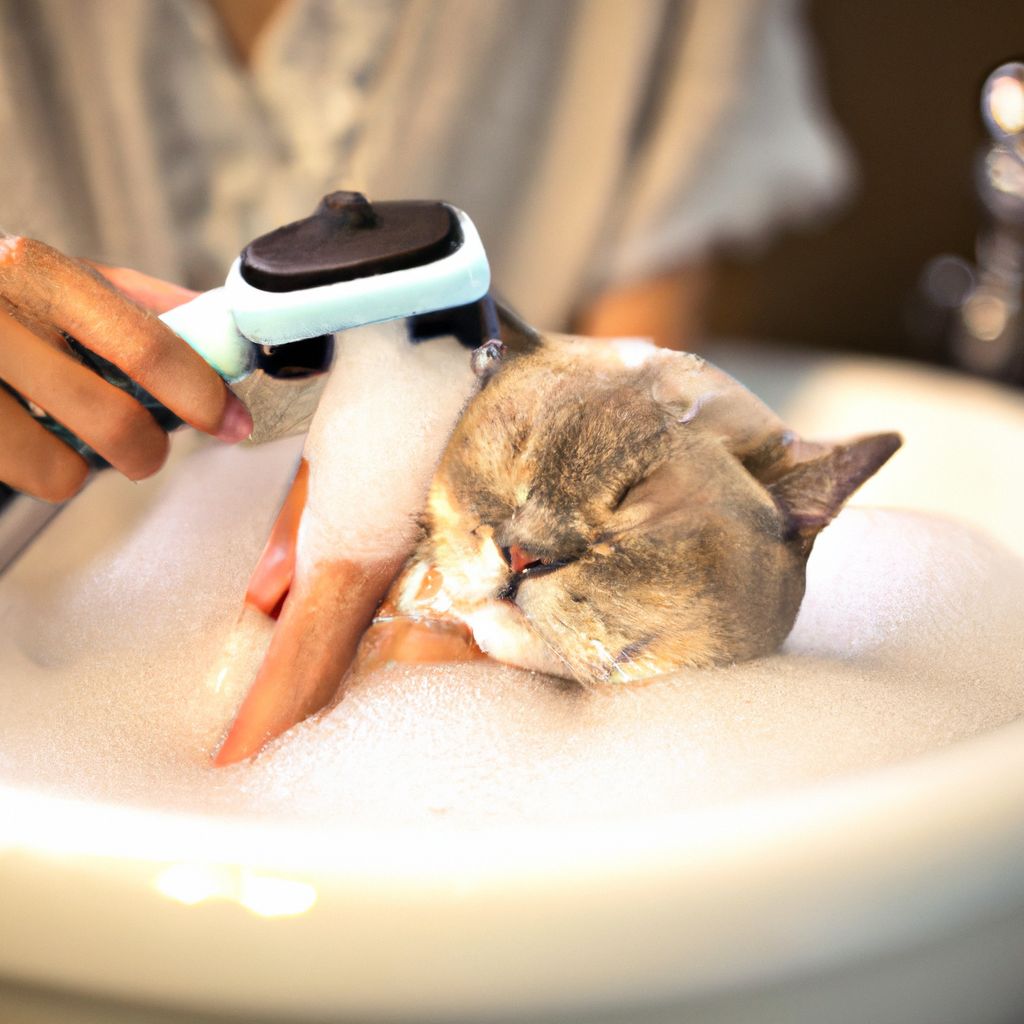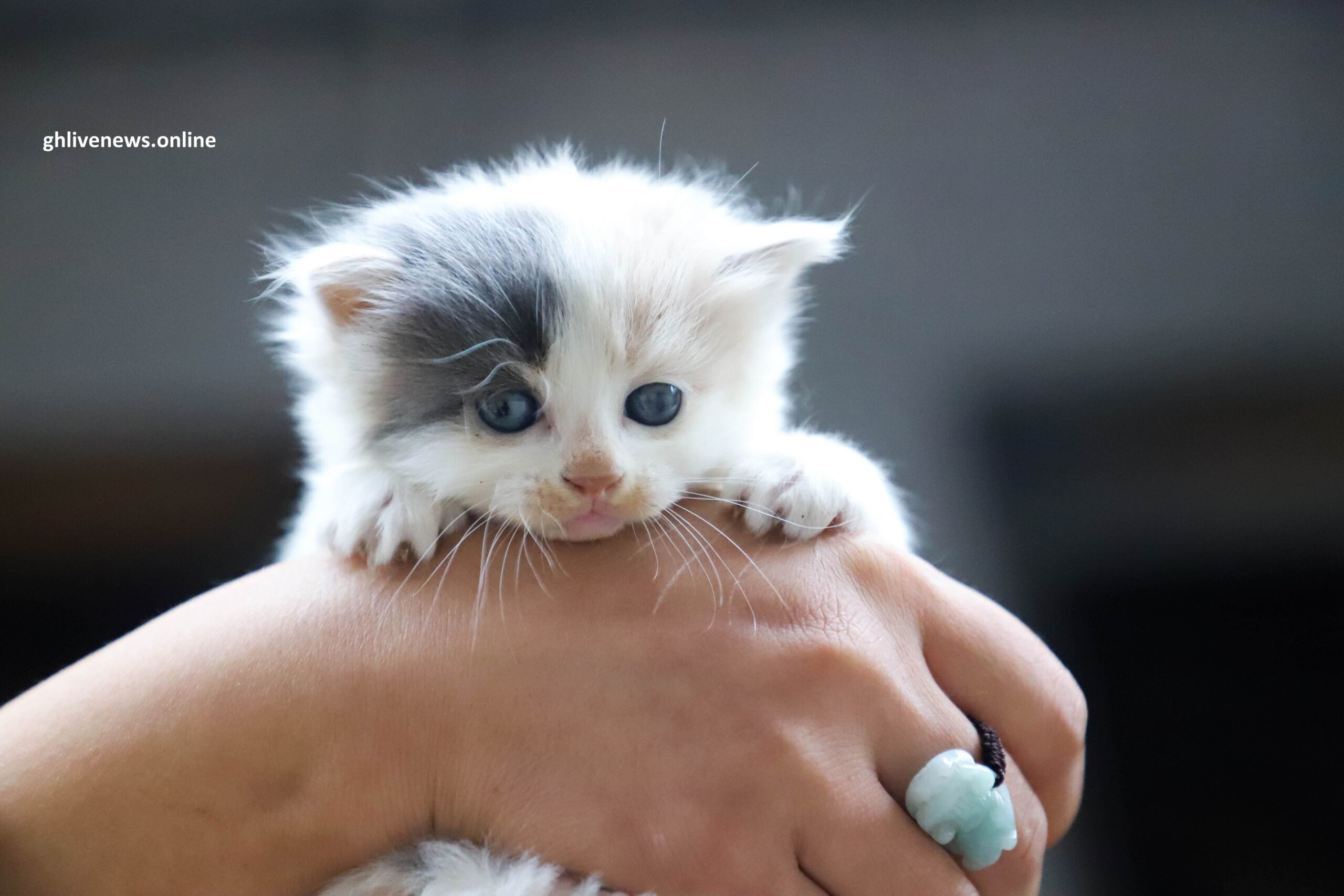.jpg)
Understanding Aggressive Cat Behavior
Cats can show aggressive behavior for a variety of reasons. Let’s explore the cause and how to manage it.
– Aggression Triggers:
- Territory disputes: Cats get mad when their space is invaded.
- Fear or anxiety: They might act up when scared or uneasy.
- Pain or sickness: Health problems can lead to aggression.
- Lack of socialization: Not enough contact with others leads to aggression.
- Eyes wide, fur up, hissing – agitated cat.
- Thrashing tail and flattened ears – intense aggression.
- Avoiding eye contact and crouching – fear-induced aggression.
- Growling, scratching, biting, lunging – common aggressive behavior.
– Prevention & Management:
- Provide safe spaces and hiding spots for cats to feel secure.
- Mental stimulation with toys and play sessions to cut stress.
- Positive reinforcement rewards good behavior, not punishing bad.
- If problem persists, see a vet or animal behaviorist.
Plus, a routine for your cat is essential. Feeding, playtime, and bonding time should all be regular. Cats need stability and love. Providing this helps reduce aggression.
Pro Tip: Don’t physically punish aggressive cats. Instead, use positive reinforcement to teach calm behavior.
Identifying the Causes of Aggression in Cats
Aggression in cats can be a source of worry for many owners. Comprehending the root of this anger is essential to manage it correctly. Here are 6 important factors to keep in mind:
- 1. Socialization: Lack of socialization in the early days can cause aggression.
- 2. Fear or Stress: Cats may become aggressive when they feel threatened or stressed, like in strange environments or when other animals are around.
- 3. Medical Issues: Aggression can be caused by physical pain or discomfort from health issues.
- 4. Territorial Behavior: Cats are territorial and may act aggressively if their space is invaded.
- 5. Play Aggression: Some cats display aggressive behavior when playing, which can get out of hand if not managed.
- 6. Hormonal Factors: Unneutered male cats may be more aggressive due to hormones.
Knowing these possibilities can help you to find the source of the aggression. Seeing a vet or behaviorist is key for a thorough analysis of your cat’s particular situation.
Every case is different, but understanding potential causes allows you to take the right steps to prevent and manage aggression. By dealing with these triggers, you can create a safer and calmer atmosphere for your cat and yourself.
Don’t wait to look for help. Resolving this problem quickly will help your feline companion and strengthen your relationship. Get advice from experts in feline behavior to make sure you have the best solution for your cat. Your proactive attitude will make a big difference in the quality of life for both of you.
Recognizing Signs of Aggression in Cats
To recognize signs of aggression in cats, pay attention to body language and vocalizations. Subtle hints can be seen before more obvious aggression. Knowing these cues can help prevent future issues.
Whiskers was a cat who had aggression issues. He was usually affectionate, but sometimes he’d lash out at visitors without any warning. To create a safer environment for Whiskers and everyone else, the owners got professional help.
They trained and modified Whiskers’ behavior. Growling and hissing were clear signs of aggression. It was often accompanied by flattened ears and an arched back. Lunging and scratching, with claws, was also dangerous. Pupil dilation means the cat is in a heightened state of arousal. Lastly, tail position can indicate a defensive feeling and potential fight.
Dealing with Aggressive Cat Behavior
Dealing with aggressive cat behavior can be tricky, but it is possible to manage it with the right approach. Here are some tips:
- Establish a regular routine for daily activities, such as feeding, playtime, and interactive sessions.
- Provide energy outlets for your cat, like toys or scratching posts. This way they won’t redirect their aggression at other people or animals.
- Create a safe space for your cat to retreat to when feeling anxious or threatened.
- Don’t use physical punishment; it could make the aggression worse and cause your cat to fear or resent you.
- Use positive reinforcement techniques to reward good behavior and discourage aggression.
- Ask a veterinarian or animal behaviorist for tailored advice and support.
Every cat is different, so patience and consistency are key when addressing aggressive behavior.
Fun fact: A Cornell University College of Veterinary Medicine study found that environmental enrichment can help reduce aggressive cat behavior!
Preventing Aggression in Cats
For the safety of all, controlling aggressive cat behavior is essential. Follow these guidelines for preventing it:
- Regularly visit the vet to rule out medical causes.
- Give your cat a safe space with hiding spots, perches and scratching posts.
- Early socialization helps cats gain confidence and stop being aggressive in unfamiliar situations.
- Use reward-based training to encourage desirable behaviors and discourage aggression.
- Engage your cat in playtime using interactive toys.
Research has proven that cats with safe environments, early socialization, and positive reinforcement training show improvements. In one case, a previously aggressive cat started behaving calmer after weeks of consistent implementation.
By using these proactive measures, cat owners can reduce aggression levels. Don’t ignore or dismiss it, as it can worsen. Seek professional help if needed. The key is understanding and addressing the root causes while giving a nurturing environment.
Conclusion – Maintaining a Happy and Harmonious Relationship with Your Cat.
Making your furry pal content and keeping a good connection with your cat is essential. Knowing their demands and giving proper care is the way to have a satisfying relationship. Playing games, feeding them healthy food, and providing a secure environment all contribute to their health. Plus, spending quality time together through brushing or petting helps build trust and strengthens the human-cat bond. Moreover, dealing with any aggressive behavior in time and getting expert help when needed guarantees peaceful coexistence. Above all, remember that each cat is special, so being patient and adjustable in meeting their individual requirements is key.
Taking proactive measures to make a positive home atmosphere is extremely important for having a successful cat-human relationship. Offering scratching posts and toys can reroute their energy away from destructive behavior to active outlets. Also, providing them with plenty of high places to explore meets their innate need for climbing and examining their surroundings.
On top of these measures, proper litter box organization is imperative. Cats are known for cleaning themselves, so keeping the litter box region tidy prevents stress or dissatisfaction with using it. Locating the litter box in an easy to access but quiet spot encourages privacy and promotes frequent use.
Remember that each feline companion has its own unique characteristics. Some cats prefer being alone while others live for social interaction. Paying attention to your cat’s behavior signals will help you understand their preferences better, allowing you to meet their individual needs properly.
Having a happy relationship with your feline friend takes effort and understanding from both sides. Cats benefit from routine, so setting up regular daily patterns can give them a feeling of assurance and joy. By creating an environment that meets their physical and emotional needs, you build the base for a strong bond based on trust.
True Fact: According to the American Society for the Prevention of Cruelty to Animals (ASPCA), playing with cats lowers their stress and anxiety levels, enhancing overall well-being.
Frequently Asked Questions
FAQs on Aggressive Cat Behavior
1. Why is my cat acting aggressively towards me?
Aggressive behavior in cats can result from various factors, such as fear, stress, pain, or territoriality. It’s essential to observe their body language and consult with a veterinarian to determine the root cause.
2. How can I calm down an aggressive cat?
To calm an aggressive cat, create a safe space with hiding spots and vertical perches. Avoid punishment and provide interactive toys, engage in play sessions, and establish a routine. Additionally, seek advice from a professional cat behaviorist.
Read Also: Common cat health issues and symptoms
3. Can aggression in cats be treated?
Yes, aggression in cats can be treated. However, the specific approach depends on the cause. Medical conditions must be ruled out first, and then behavior modification techniques, environmental adjustments, and sometimes medication are implemented. Consulting a veterinarian or a behaviorist is crucial.
4. Is neutering or spaying a cat helpful in reducing aggression?
Neutering or spaying can significantly reduce aggression in cats, particularly if hormones are the underlying cause. It helps minimize territorial behavior, roaming instincts, and potential conflicts with other cats. Consult with a veterinarian to determine if this is suitable for your cat.
5. How should I handle an aggressive cat during playtime?
When playing with an aggressive cat, it’s important to avoid using your hands as toys. Instead, use interactive toys with proper distances. If the cat becomes too aggressive, redirect their attention to a toy or a scratching post and provide positive reinforcement for appropriate behavior.
6. What should I do if my cat’s aggression worsens?
If your cat’s aggression worsens or poses a risk to anyone’s safety, it’s crucial to seek immediate professional help. A veterinarian or a cat behaviorist will be able to assess the situation, provide guidance, and determine an appropriate course of action.
Originally posted 2023-07-28 17:54:07.






